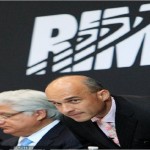Gap, Inc. And Sweatshops

What many would call labor violations still occur everyday at factories using sweatshop conditions to supply major American Brands like the Gap. It may seem that corporations like the Gap, Nike or Wal Mart are too big to be affected by news that might arise of sweatshops. Yet the activism of nongovernmental organizations, students and journalists have penetrated the public sphere of awareness and corporations are forced to take notice. When companies like Gap, Inc. take initiative in creating a transparent supply chain, they invest the apparel industry’s future in social responsibility.
The risk Gap, Inc, took in 1996 could have isolated it from both industry competitors and manufactures. At an early stage of public awareness of the new global sweatshops, being a company that promoted social responsibility was untested. Though the risk could very well put the Gap in a position to be a paragon of manufacturing standards. When the Gap made public is first social responsibility report in 2003, the Nike Corporation followed suit, an unforeseen effort to address sweatshops. When multibillion-dollar corporations turn the light on their suppliers, it’s a short-term risk of losing customers by admitting to unfair labor conditions. It’s a bit like a landlord turning the lights up for all his tenants to see the roaches and though losing some renters at first, there is a better sense of the problems that need fixed. This was probably part the Gap’s, and consequently Nike’s strategy; expose the sweatshops, start addressing the problem and eventually win customers back.
Companies like the Gap depend on younger demographics and take notice of the age of the activists who question them. When students get energized to not only boycott, but also actively campaign against certain labels, the Gap has to step up PR to fend off becoming a tainted brand. The social responsibility reports of corporations are subject to criticism from anti-sweatshop organizations for just being P.R. Corporate watchdogs such as Global Exchange, Sweatshop Watch and Oxfam are able to spot genuine efforts from the press fodder. Internal monitoring at a company like the Gap, who works with over 3,000 suppliers, may be efficient, but it doesn’t appease critics who want to see real results. The only solution is to open factory doors to independent monitors, who then put the responsibility on corporations to develop code of conduct enforcement.
A key moment came in 1996 when “Gap had bucked its industry peers” allowing independent monitoring in it’s South American suppliers, wrote Conrad Mackerron of San Francisco non-profit As You Sow. This posed a particular risk for Gap in that suppliers are usually producing for several labels at once. If the Gap reveals sub-standard conditions at one of its suppliers, it exposes other retailers in the process. While this is the point of transparency amongst suppliers, retailers and consumers, it can put the Gap in an awkward industry position. In the end, Gap’s risk can play an important role is raising standards from sweatshops in places like South Asia. With over 400 hundred factories in China, the Gap disclosed that up to 50 percent of them were not in compliance with labor laws, according to a report from Michael Liedtke of the Associated Press. If major labels like the Gap, Nike, adidas, and Wal Mart cooperate with independent monitoring and act on criticism in can prevent factories from lowering standards to stay competitive in pricing.
Gap Inc. may have seen the value in this early on when the took a blow from workers in Saipan, a U.S. territory in the Pacific Islands. Legal action over human rights brought Gap Inc. and other companies into settlement with workers in 1999 at nearly $20,000,000. As the apparel industry tries to recover its cultural status with a cynical youth, the issue of sweatshops deflates their efforts in an era of globalization. Companies like the Gap also signify the last decade’s frenzy of marketing that caused more cynicism in consumers. Doug Rushkoff uses the Gap as an example of a company that “lost its way by outsourcing design and manufacturing”, in his book Get Back In The Box. The company was so focused on image and branding, that it lost control of its original purpose to fill a void (Gap) in apparel, it was “focus groups instead of real time store sales.” This is what made the Gap so vulnerable to criticism; the only aspect of their business they didn’t outsource was marketing. Yet even that often fell victim to consulting and taking initiative on addressing sweatshops may have put them back in the game. This is further proof to the corporate world that customers can see right through a cheap marketing trick, but being transparent with social responsibility speaks for itself.





